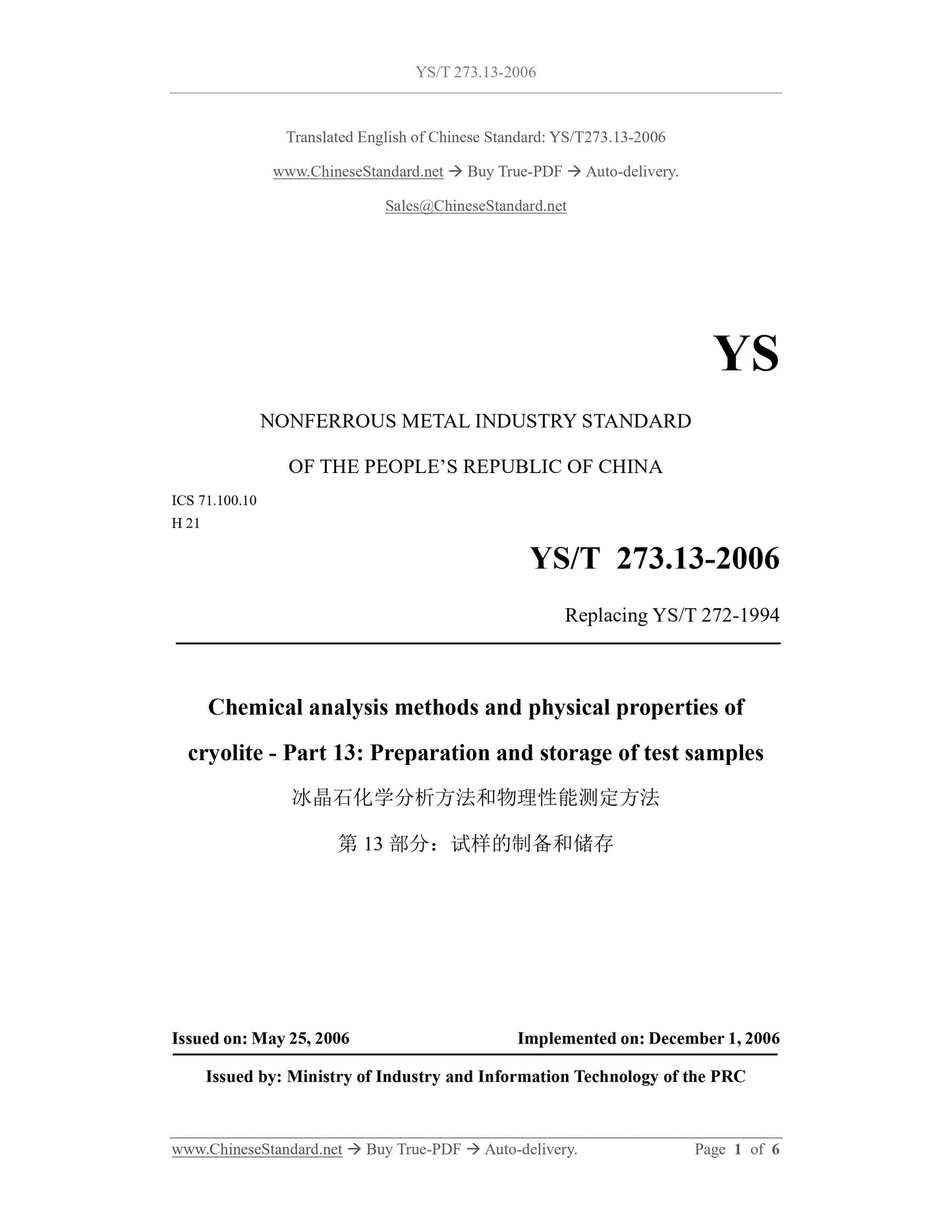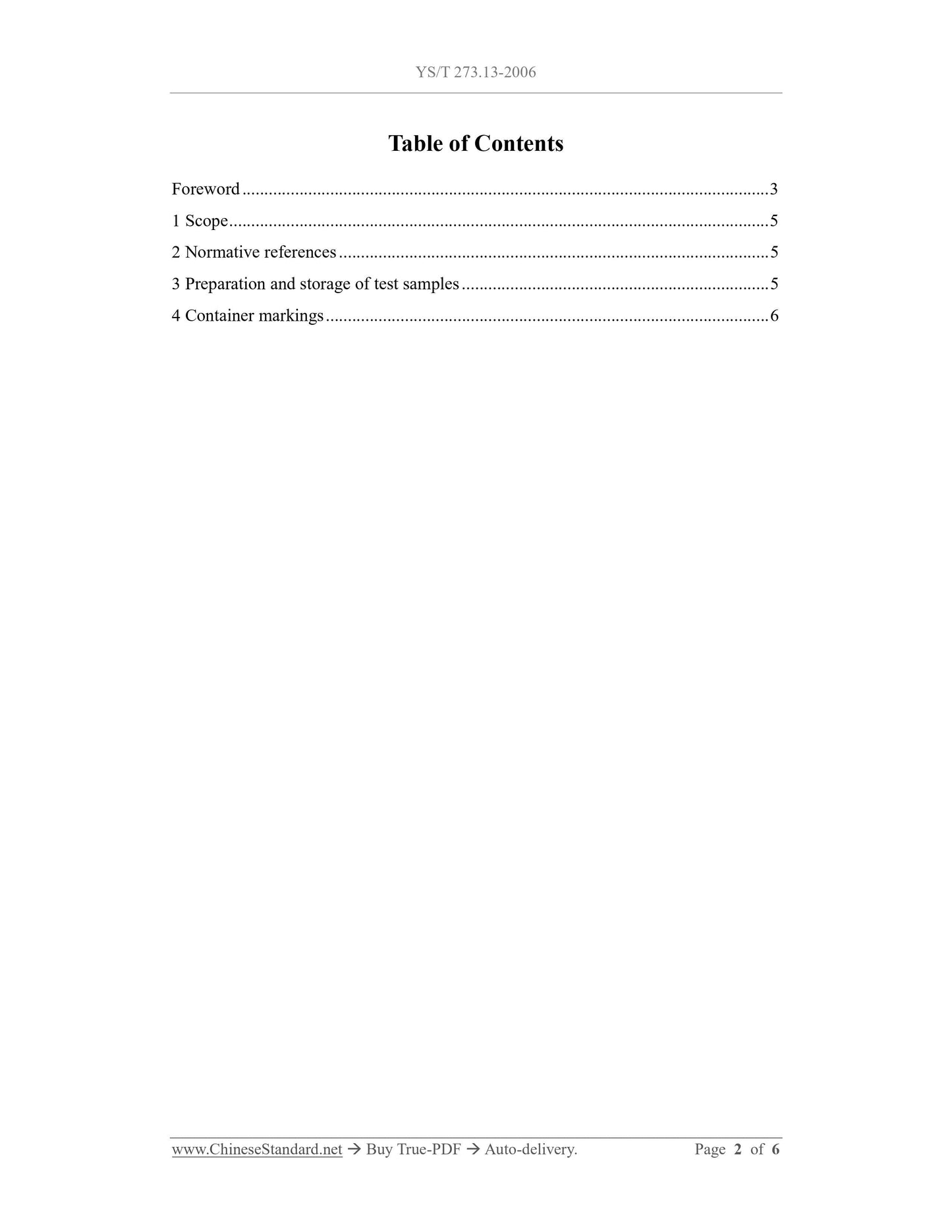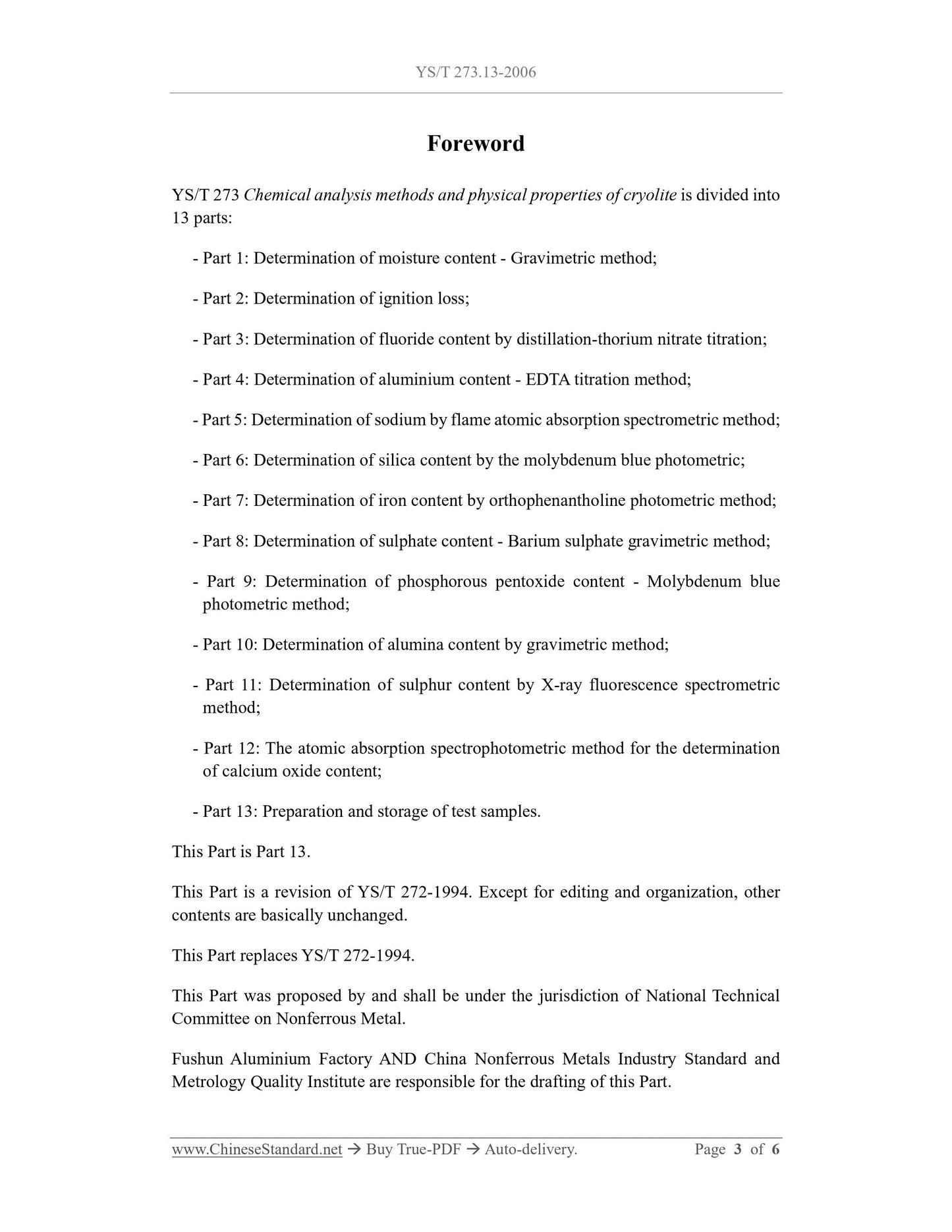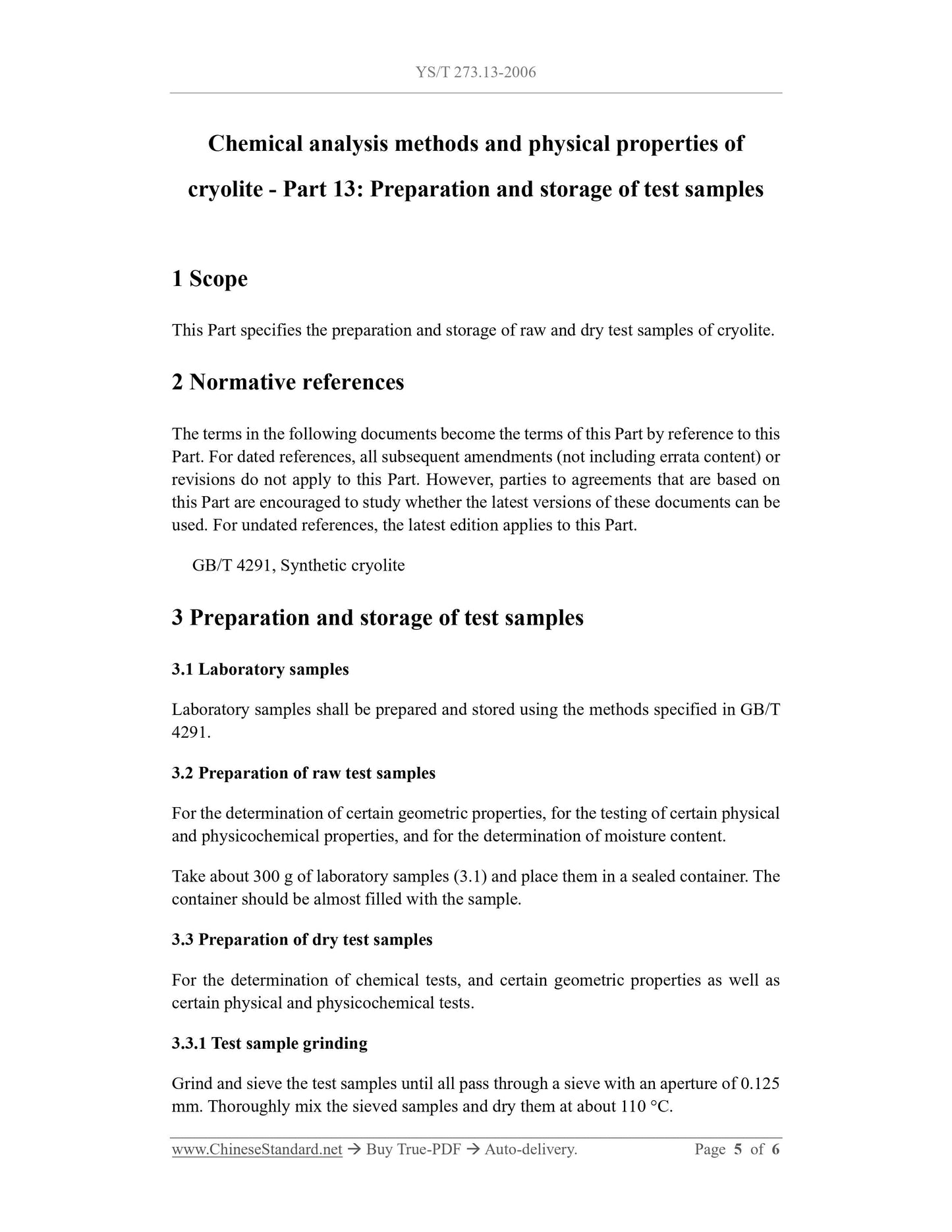1
/
of
4
www.ChineseStandard.us -- Field Test Asia Pte. Ltd.
YS/T 273.13-2006 English PDF (YS/T273.13-2006)
YS/T 273.13-2006 English PDF (YS/T273.13-2006)
Regular price
$70.00
Regular price
Sale price
$70.00
Unit price
/
per
Shipping calculated at checkout.
Couldn't load pickup availability
YS/T 273.13-2006: Chemical analysis methods and physical properties of cryolite. Part 13: Preparation and storage of test samples
Delivery: 9 seconds. Download (and Email) true-PDF + Invoice.Get Quotation: Click YS/T 273.13-2006 (Self-service in 1-minute)
Newer / historical versions: YS/T 273.13-2006
Preview True-PDF
Scope
This Part specifies the preparation and storage of raw and dry test samples of cryolite.Basic Data
| Standard ID | YS/T 273.13-2006 (YS/T273.13-2006) |
| Description (Translated English) | Chemical analysis methods and physical properties of cryolite. Part 13: Preparation and storage of test samples |
| Sector / Industry | Nonferrous Metallurgy Industry Standard (Recommended) |
| Classification of Chinese Standard | H21 |
| Classification of International Standard | 71.100.10 |
| Word Count Estimation | 5,510 |
| Date of Issue | 2006-05-25 |
| Date of Implementation | 2006-12-01 |
| Older Standard (superseded by this standard) | YS/T 272-1994 |
| Quoted Standard | GB/T 4291 |
| Regulation (derived from) | NDRC Notice No. 36 of 2006 |
| Issuing agency(ies) | National Development and Reform Commission |
| Summary | This standard specifies the cryolite original sample and drying sample preparation and storage. |
Share







